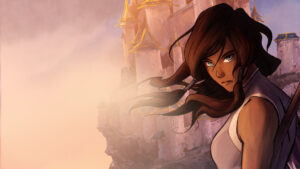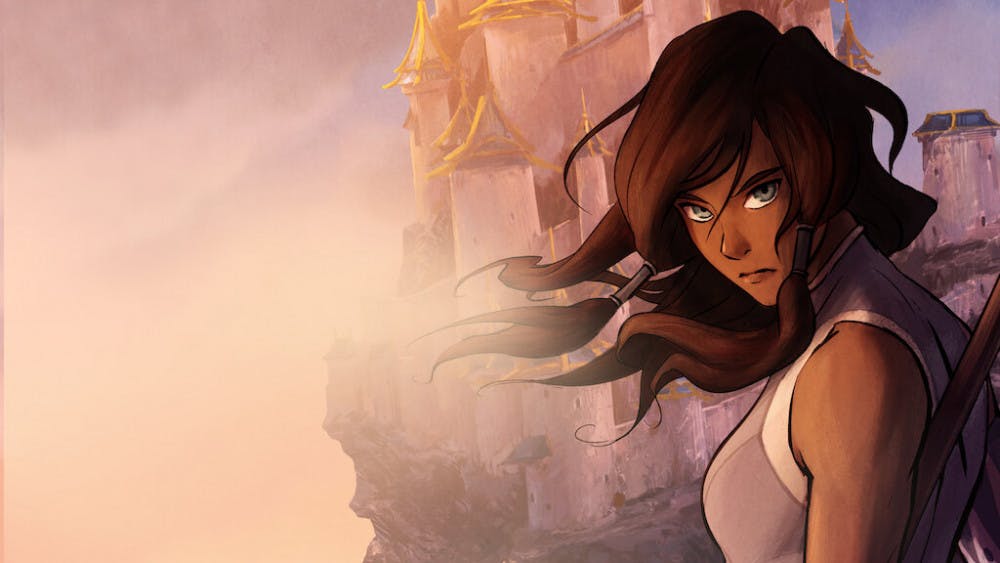By Ian Krietzberg
Arts & Entertainment Editor
Swiftly following the release of “Avatar: The Last Airbender (ATLA)” to Netflix came its controversial sequel: “The Legend of Korra (LoK).” The series recently spent a good amount of time on Netflix’s top 10 in the U.S. list, and so became deserving of my attention.
After years of being a loyal and devoted fan of ATLA (and ignoring the existence of LoK), I finally bent on seeing its recent upsurge in internet popularity, and over the course of four days, binged all four seasons.
My take on the show? It needs to be considered in two different categories.
The first category that must be considered when thinking of LoK is the way it functions as a sequel. Despite the fact that much of the internet claims fervently that LoK cannot be thought of in relation to ATLA, it is impossible to ignore.

As a sequel, it fails at a level consistent with the relationship between the Star Wars sequels and the remainder of the series.
The biggest reason behind this thinking applies to any failed sequel. When a sequel retroactively ruins aspects of the original, it fails.
LoK unfortunately does a lot of retroactive damage with respect to the ATLA universe.
The biggest part of this involves the Spirit World and its use in LoK versus ATLA. In ATLA, the Spirit World, and spirits in general, are clearly derived from the spirituality and religion that is signature to Native American or indigenous peoples.
The spirits in ATLA are defenders of nature, and while they have power, they are neutral in relation to the conflicts of men. Hei Bai, Tui, La and even Koh are all examples of this.
In LoK, spirits are not neutral. There are good and evil spirits, and the vast majority of spirits feel out of place as rabbit-shaped balls of light.
The way spirits are utilized in LoK ruins the integrity of the spirituality that was so prevalent in ATLA.
Part of this works the same way as explaining a magic trick. Trying to give a clear definition and explanation of something so often ruins the magic and mystique of that thing, and in this case, LoK’s explanation of the Spirit World effectively ruins it.
Beyond that, the hurdle that was most difficult for me to get over was that the sequel takes place seventy years after the events in ATLA — original characters are dead, or, if they are alive, are vastly different than how I know them.
Besides the general discomfort of seeing my favorite characters at the end of their lives, the decision to space out the shows by that length of time creates a constant problem: we only know the characters at the beginning and end of their lives, so any decisions they have made somewhere in between is beyond a satisfactory explanation or justification.
And here is the reason that so many people urge us to ignore ATLA in watching LoK: ATLA sets the bar too high. It is a beautiful, cohesive story, full of creative and elite character arcs and maintains its realism even in a fantasy world. LoK was not the sequel many fans wanted. All they wanted was another four or more seasons of the Gaang, with a healthy sprinkling of Uncle Iroh.
Instead, we got LoK, which brings up the next category: how LoK stands independent of ATLA.
The most obvious negative aspect of the show, especially in the earlier seasons, was the dialogue, which proved to be weird and clunky more often than not.
Each season is also exceptionally self-contained. While the blame for this lies with Nickelodeon, it is still a problem within the show. Each villain lacks a proper build-up, so every season falls into a familiar pattern: Korra rashly fights the villain at the beginning of the season, loses terribly, re-dedicates herself to her training and then fights to defeat the villain at the end of the season.
This pattern takes out the opportunity for proper suspense and fear to surround a good villain.
In terms of the series’ general environment, Republic City’s technology that has been incorporated into LoK is distracting and out of place. It does not make sense for a medieval fantasy world modeled after the cultures of Ancient Asia to, in 70 years, essentially turn into a different version of 1920s New York City. It grounds the show in an American reality instead of an Asian-based fantasy.
While it does have its flaws, there is a reason why LoK is so highly rated and reviewed. It’s largely a show for a more mature audience. It deals with issues of trauma, psychological damage, and threats that might be more relatable to our modern society: power-hungry or failing governments, the constant prevalence and threat of technology, and more.
LoK is a visually stunning show, and while it does have its compelling moments of humor, wisdom, or intensity, it largely feels like a teen crime drama transplanted over an unrealistically modernized version of the ATLA universe.







